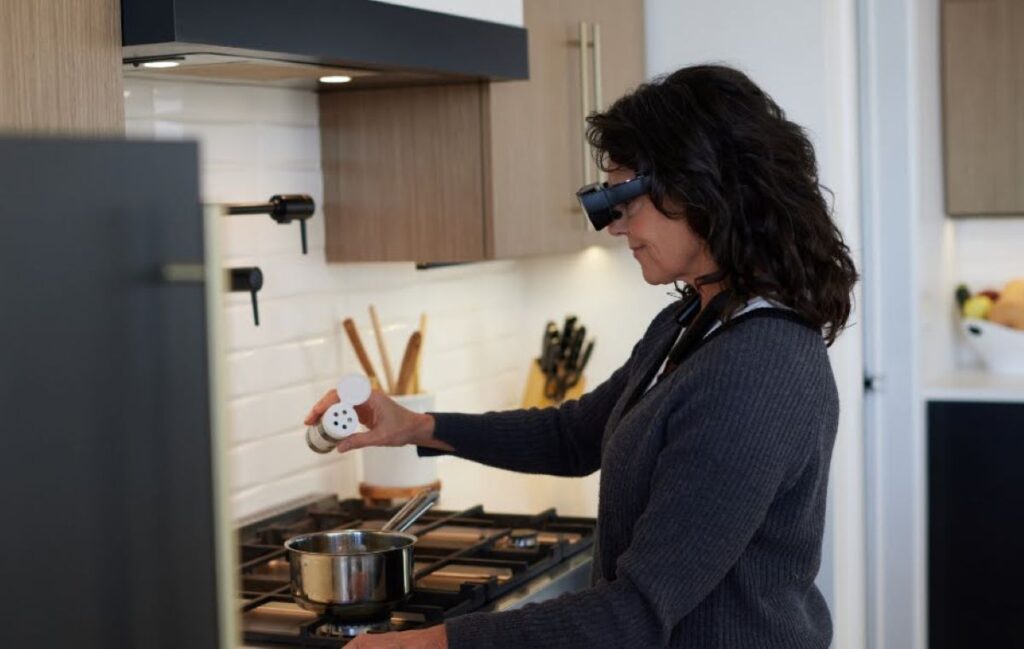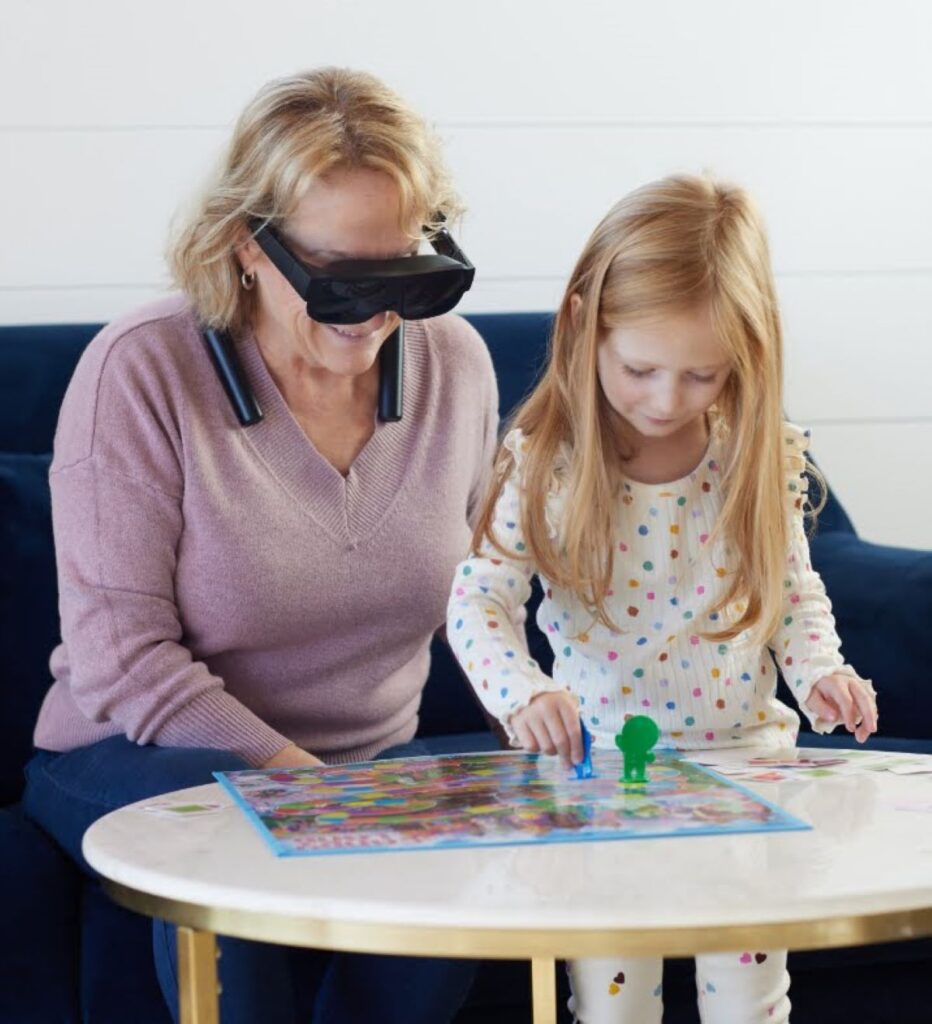eSight Go Glasses – The most advanced vision enhancement solution
eSight Go glasses are eSight’s newest electronic glasses that can help people with significant central vision loss and full vision loss achieve up to 20/20 vision. The eSight Go™ glasses are light, sleek, and comfortable, so you can wear them all day, from indoor, and routine activities to outdoor, physical environments. The eSight Go glasses contain a small, high-speed, high-definition camera that captures everything you are looking at. The camera in the glasses works with advanced software systems to enhance the footage and project the view into the glasses in real time, enabling you to see with clarity what is in front of you.

eSight Go – thoughtfully crafted to move seamlessly through the day, from reading to activities indoors and out.

- The device is wireless and hands-free with built-in controls allowing you to freely move as you normally would.
- The glasses incorporate a natural peripheral vision for 100% mobility retention helping with depth perception problems.
- The eSight Go glasses are light-weight so, you can wear them throughout your day without needing to take a break.
Features:
- The glass’s sleek design has the appearance of sunglasses so you stay looking stylish.
- Ergonomic neck battery pack ensures hours of continuous use
- Optional prescription lenses optimize vision enhancement adding to the versatility of eSight Go
- Best-match camera and lens technology projects a superior image onto 2 high-resolution screens (one per eye) for full vision
- eSight’s advanced sensors, proprietary algorithms, and powerful processing provide you with the highest-quality visual information.

You can view pricing information here. To learn more about the eSight Go glasses or how to get a demonstration set up with your local rep, give us a call here at NanoPac at 918-665-0329 or email info@nanopac.com
